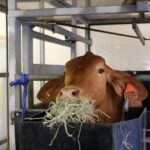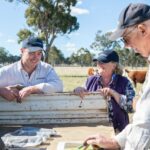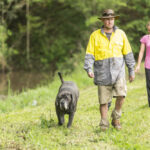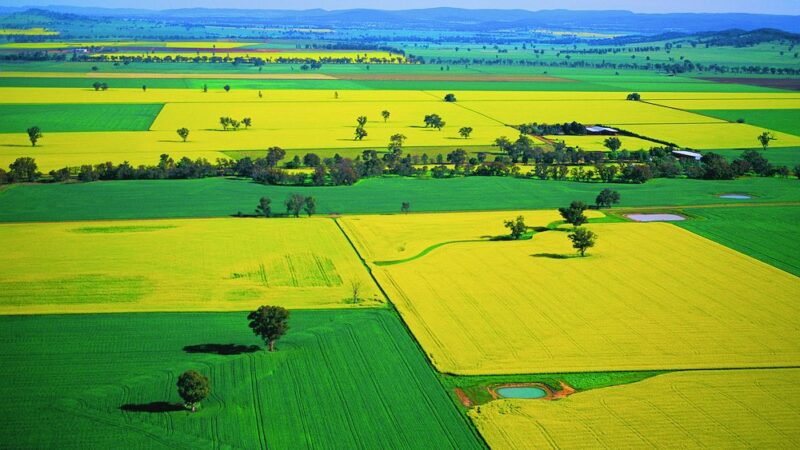The CSIRO has formed a new company to bring a methane-busting seaweed livestock feed to…
Soil carbon to reduce greenhouse emissions
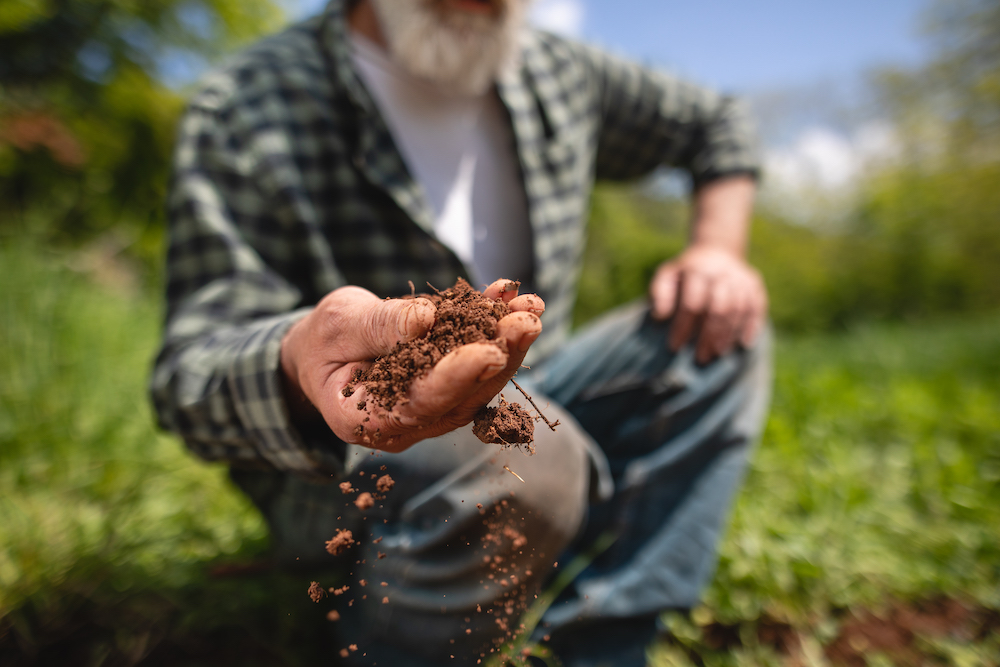
Last September the Minister for Energy and Emissions Reduction, Angus Taylor, released the Federal Government�s Technology Investment Roadmap, which highlighted soil carbon as one of five priority technologies to benefit from $18 billion of government investment.
To make it easier for farmers to be rewarded for undertaking soil carbon farming, the Federal Government recently released a new draft soil carbon method for the Emissions Reduction Fund (ERF) administered by the Clean Energy Regulator (CER). The new method will reduce measurement costs, by allowing modelled estimates of soil carbon change in combination with measurement approaches, as well as broaden the range of agricultural activities that contribute to soil carbon storage, including improving fertiliser application, re-establishing pasture and modifying grazing practices.
There�s some concern about the effectiveness of soil carbon sequestration in a drought-prone country with some of the world�s oldest, most poorly structured soils. The debate involves a complex stew of science, policy, politics, money, technology, hard work and hope against the backdrop of the pressing need to explore every avenue to meet the challenges posed by climate change.
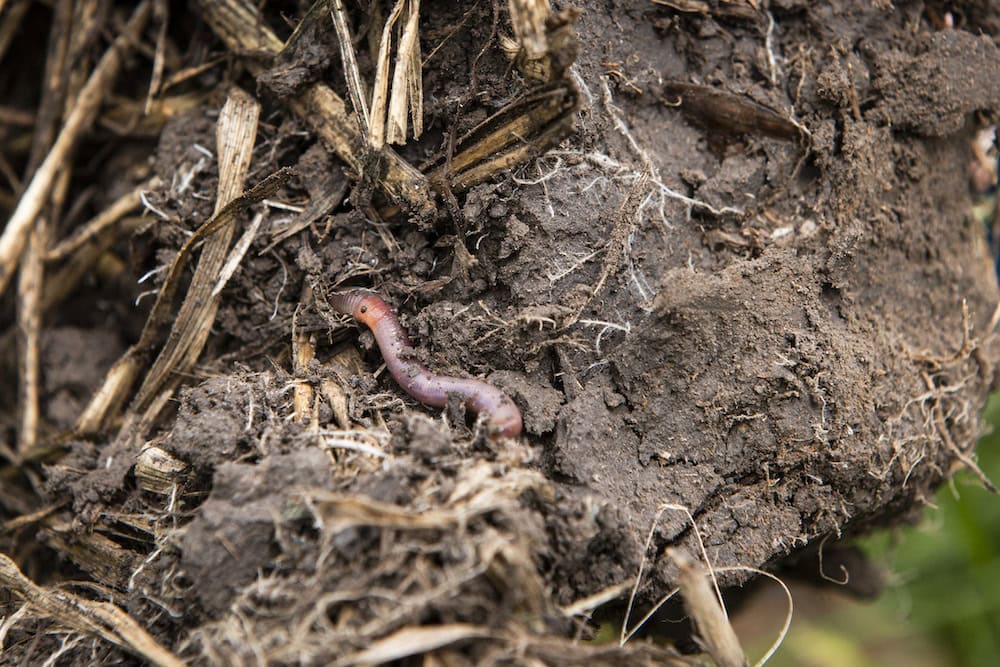
At the very least, improving soil health (including soil carbon) benefits farm productivity and resilience in the face of an increasingly erratic climate. But, as we�ve learned from dealing with the COVID-19 pandemic, it�s important to follow the science. Yet science sometimes gets lost in the shuffle, especially in a developing market with emerging technologies and divergent viewpoints.
A deep dive into carbon credits in Australia
According to A landholder�s guide to participate in soil carbon farming in Australia (an August 2021 paper by Richard Eckard, Robert White and Brian Davidson for the Australian Farm Institute) the ERF offers the main avenue for landholders to earn income from soil carbon farming. Participants create carbon abatements through approved land management practices to bid for offsets called Australian Carbon Credit Units (ACCUs), with one ACCU providing one tonne of carbon dioxide equivalent of abatement.
Landholders can choose to sell their offsets to the government, which counts as an offset to Australia�s reported emissions, or sell them in the more flexible voluntary market, where companies often use non-conforming methodologies that may not have the integrity of the rigorously vetted ACCUs. Carbon credits sold to overseas investors cannot be counted as offsets to Australian emissions.
The CER is also close to choosing a consortium to operate the highly anticipated online commercial Australian Carbon Exchange (where brokers, companies and individuals will be able to buy and sell emissions offsets), which will increase market transparency and reduce transaction costs and red tape.
The Carbon Market Institute
John Connor is the CEO of the Carbon Market Institute (CMI) � an independent industry association that is contributing to Australia�s transition to a net-zero emission economy. It is the steward of Australia�s carbon market, the developer of the world�s first carbon industry code of conduct and the creator of the Carbon Farming Industry Roadmap.
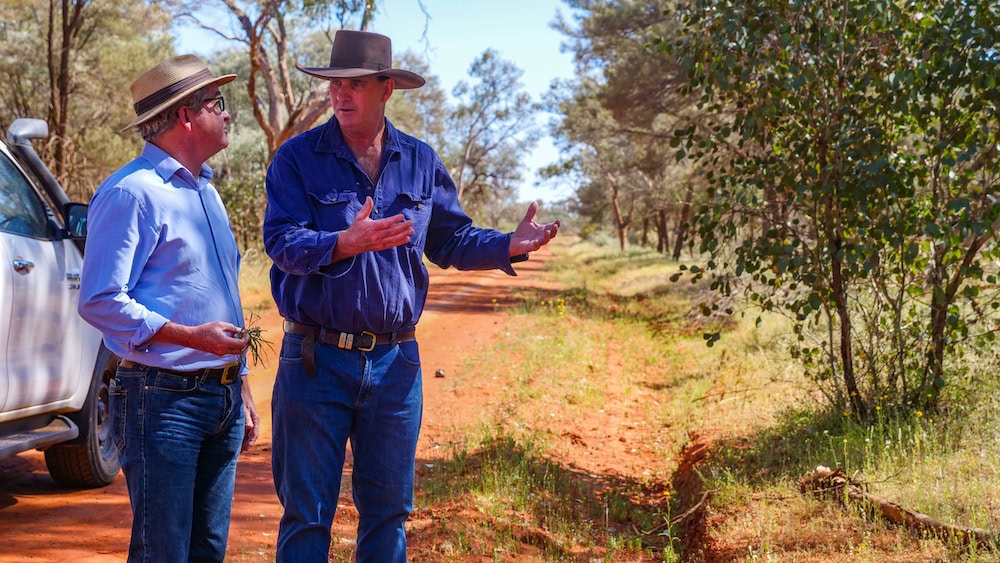
According to John, carbon farming is a critical source of negative emissions solutions that can be deployed at scale across Australia.
�While the Federal Government has been effective in using its taxpayer-supported ERF to help develop a carbon market that is based on integrity and transparency, it has not been ambitious enough with its goals to reduce GHG emissions,� he says.
�What�s interesting is that increasing corporate demand means the ERF�s future may be acting more as a de-risker of investments rather than a driver.
Pressure on corporates from global capital and consumers to demonstrate a transition to net-zero emissions is the greatest motivator for driving up the price of carbon, and the agricultural industry can benefit from that.
�Foreign markets are also increasingly demanding that agricultural products are carbon neutral, so managing carbon is increasingly core business for Australian farmers.�
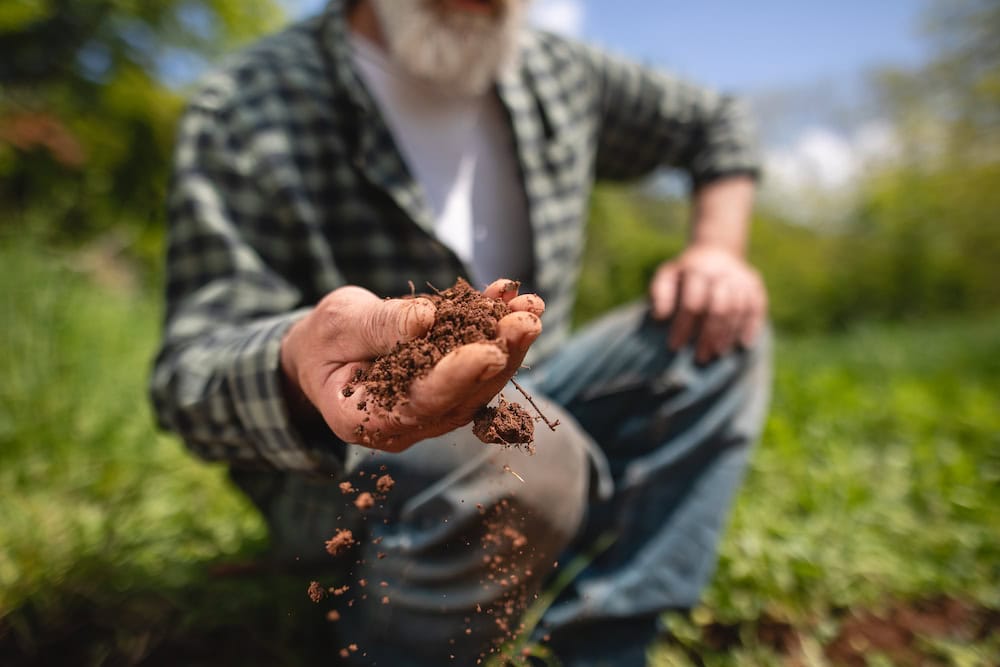
Rainfall in Australia is key to soil carbon
Richard Eckard is Professor of Sustainable Agriculture at the University of Melbourne and Director of the Primary Industries Climate Challenges Centre � a research centre addressing the impacts of a changing climate on agriculture. He is a science advisor to the Australian, New Zealand, UK and EU governments, the UN Food and Agricultural Organisation, and the International Livestock Research Institute.
�Soil carbon is a direct function of plant growth, as plants capture carbon through photosynthesis,� he explains. �In Australia, rainfall has a 95 per cent impact on soil carbon, so the most reliable areas to focus on increasing soil carbon are farms on good clay soils (sandy soils do not hold carbon) with relatively high consistent rainfall.
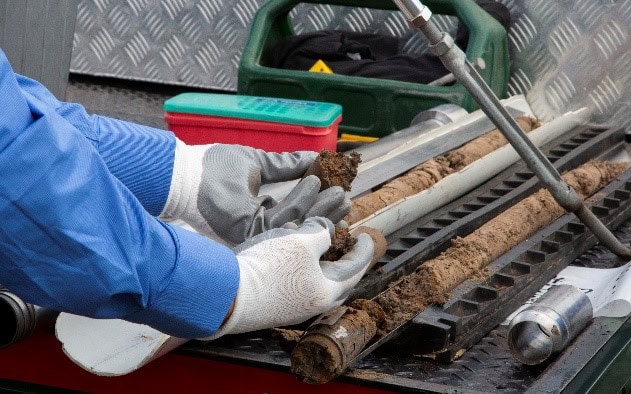
�Unfortunately, climate change patterns are quite clear. Over the last 20 years there has been a consistent reduction in growing season rainfall, which directly impacts crop growth and soil carbon levels. Farmers should be aware that the exaggerated claims made by some carbon aggregators are not necessarily achievable.�
The role of carbon aggregators
Matthew Warnken is the Founder and Managing Director of AgriProve � one of the earliest soil carbon project developers in Australia and one of the signatories to CMI�s carbon industry code of conduct. AgriProve currently has 140 agricultural soil carbon projects countrywide. According to Warnken, the soil carbon market is the fastest growing market in Australia, and Australia has the highest number of soil carbon projects in the world.
�After speaking to a range of farmers across kitchen tables, we have worked to ensure our interests are aligned,� he says. �Farmers receive 75 per cent of the project carbon credits and we receive 25 per cent, which is only paid with project success. We�re keen to remove barriers to participation in carbon farming. We have a partnership model with a cash-free alternative that covers sampling costs via a risk-adjusted allocation of future ACCUs based on the project type, soil type and rainfall on each farm.�
One client is Nathan Simpson, the CEO of Binginbar Farms, a mixed cropping and lamb-finishing farm near Dubbo, which is the 1,000th registered ERF project.
�The 2017-19 drought was the worst and longest in the 153 years since our family has owned this property, and we wanted to do everything we could to minimise future drought repercussions,� Nathan says.
�This involved a significant mindset change, which is particularly difficult with the older generation, but it was also a business productivity decision. We decided to keep our ground cover and change to multi-species pasture so there�s always something growing when there�s enough moisture. This organic matter will not only sequester carbon but also dramatically improve the soil�s water holding capacity. We�ll do a rotation of perennial pastures for five years and cropping for five years as well, with full stubble retention. This means a bit of investment is required. We�ve already bought a new $600,000 air-seeder.�
According to AgriProve�s projections, with appropriate farm-management improvements, a pasture-based farm with an annual rainfall of 300-600mm (Dubbo�s mean annual rainfall is 553mm) could accrue 3.0 ACCUs per hectare, while the soil organic carbon sequestration under cropping could accrue 1.6 ACCUs per hectare.
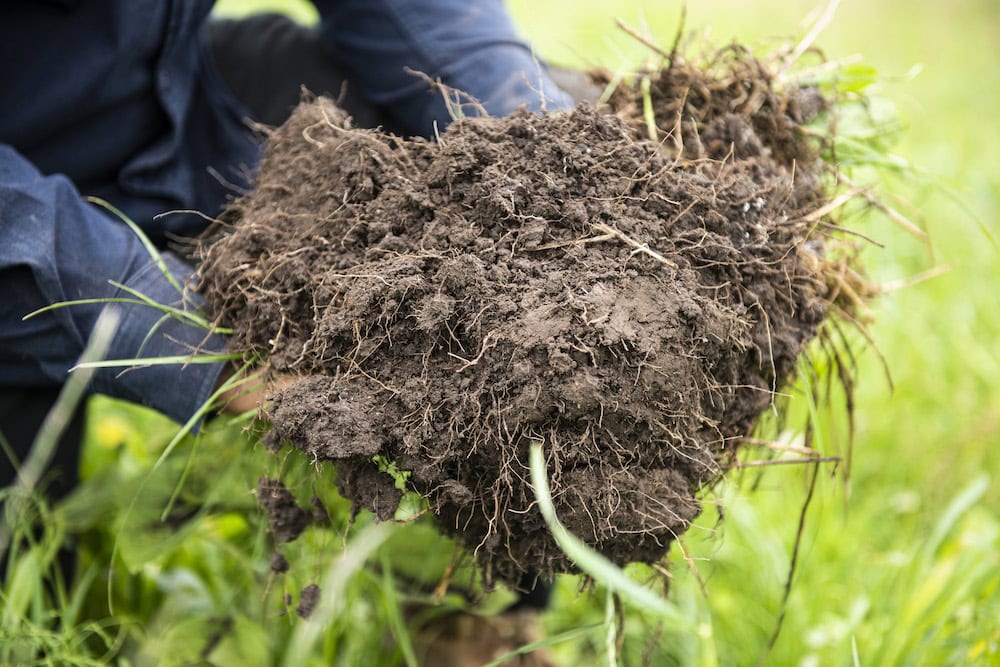
Climate Friendly is another leading carbon project service provider and a carbon industry code of conduct signatory. It is supporting partners to develop 130 carbon farming processes across Australia, one third of which are in NSW.
�These figures are the top end of what we think could be feasible based on the current available science. It would be challenging to sustain this rate over 25 years,� says co-CEO Skye Glenday. �Typically, we undertake soil carbon feasibility in regions with higher average rainfall. Soil projects may also be viable in lower-rainfall regions if combined with activities that also store carbon in vegetation.�
Richard Eckard from the University of Melbourne is clear about the science. Low and variable rainfall in large areas of Australia limits plant growth, therefore sustained increases in stored soil carbon of 1.0 tonne per hectare per year, even under the most favourable land management, are difficult to achieve. Soil carbon is a big input/output equation. In a drought plants stop growing, so the carbon inputs decline, but the soil microbes keep eating carbon and releasing it as carbon dioxide, thus soil carbon is lost.
Richard believes AgriProve�s figures are generally overblown. For instance, �Their projected storage of 2.7 tonnes of carbon in high rainfall area pasture management implies that a farmer can grow 200 tonnes of pasture per hectare. The only way to achieve this would be to import organic matter or use a machine to bury surface organic matter,� he says.
�There�s no upside for us in overpromising,� says Matthew from AgriProve. �We�re only going to be commercially successful as a credible partner to farmers if we deliver on what is achievable. I�ve read past soil literature that NSW soils could only yield one carbon credit per hectare a year, but I think the potential is better than that. This is an emerging field and new data proof points are also emerging. The real opportunity is far greater than studies based on 20-year-old meta data averages.�
At the end of the day, farmers will need to weigh the long-term costs and time commitment of establishing carbon farming projects as well as the associated costs of changed management practices against the benefits of increased productivity, and the co-benefits of improved soil structure and better water holding capacity, increased biodiversity and ecosystem services.

In the short term these may be more significant than the net income earned from the sale of carbon credits. Yet, with careful management under the right conditions, this emerging market may offer farmers new income streams.
New investment and new technology will likely see better soil carbon tools become available beside a mixed suite of options that reward farmers for whole-of-farm improvements, combining soil and vegetation carbon storage in a single method, alongside biodiversity stewardships through the government�s pilot program for carbon and biodiversity.
Soil Carbon 101 for farmers considering entering the carbon trading market
Lorraine Gordon is a third-generation beef trader in optimal high-rainfall basalt country in Ebor. She�s the first farmer to register for ACCUs in Northern NSW. If all goes well according to her management plan, and a 1 per cent carbon increase is achieved per hectare over 400 hectares, it would result in 49,600 ACCUs at $30 a tonne of C0? equivalent, which has the potential to earn $1.5 million within five years.
�Carbon trading gives my farm another income stream. In the future, I see myself as a carbon farmer that uses cattle fattening to sequester carbon,� she says.
Lorraine�s suggested carbon farming checklist, with or without a carbon aggregator
Get a carbon ready initial farm assessment and appraisal.
Complete a carbon management plan to increase soil carbon. Lorraine is adding gypsum, composting across the farm, increasing her stock density across smaller paddocks, and introducing multi-species pasture cropping.
Register the project with CER before making any changes.
Do not lock in any contracts as the price of carbon is going up. To get the best price, wait to sell on the spot market in the future.
Complete baseline documentation to establish the history of your previous practice.
Baseline soil testing and auditing includes mapping, recording, analysis and record keeping.
Review your management plan annually.
Get external independent audits.
You can sell your ACCUs within three to five years to either the government or a corporate/voluntary market.
There is also the possibility of carbon stacking by building on a range of ecosystem services including soil carbon, biodiversity offsets, and methane reduction.
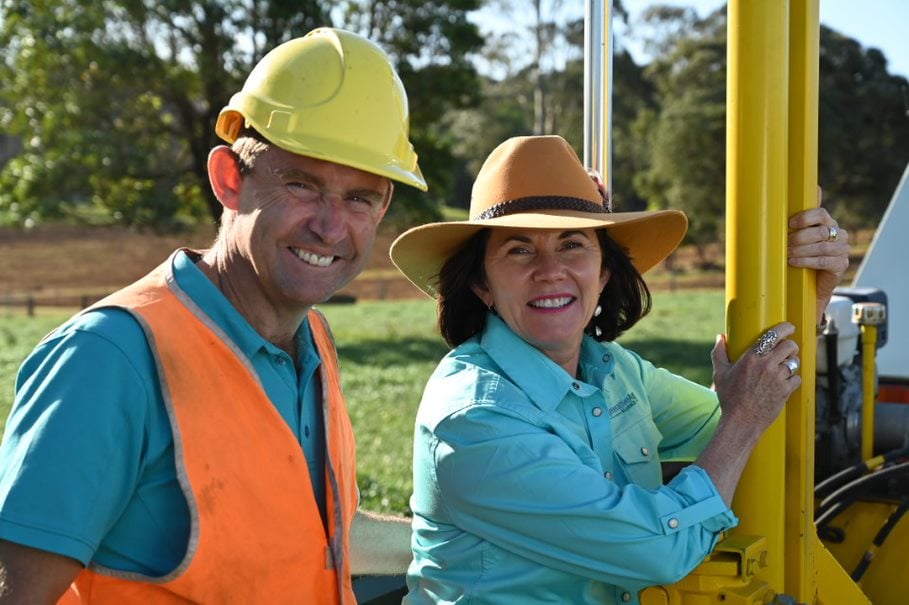
New technologies in measuring soil carbon
Part of the ERF�s new method to reduce the cost of measuring soil carbon involves modelling in addition to soil measurement through laboratory analysis.
The CER has approved spectroscopy as a new technology, and Newcastle-based start-up Hone Carbon has developed a suite of hardware and software including an affordable wireless Bluetooth phone-controlled spectrometer (pictured) that shines light against soil core samples to measure changes not only in soil organic carbon but also moisture, nitrogen, pH and much more. According to CEO and co-founder Phil Ireland, this is disruption in the truest sense of the word.

Microbially-mediated soil carbon is one of many new areas of soil research. Agronomist Guy Webb and partners have created Loam Bio, located in Orange, to commercialise a technology based around endophytic microbes which can be used as seed dressings that will ideally allow farmers to draw down excess carbon from the atmosphere to deposit in their soils long-term. Field trials are currently underway to prove the technology at scale.
But Richard Eckard has reservations about the biosecurity of introducing microbes into established ecosystems as well as the effectiveness of adding new microbes to soils which already have billions of competitive microbesin situ.
If you enjoyed this feature on soil health, you might like our story on harvestable rights.


